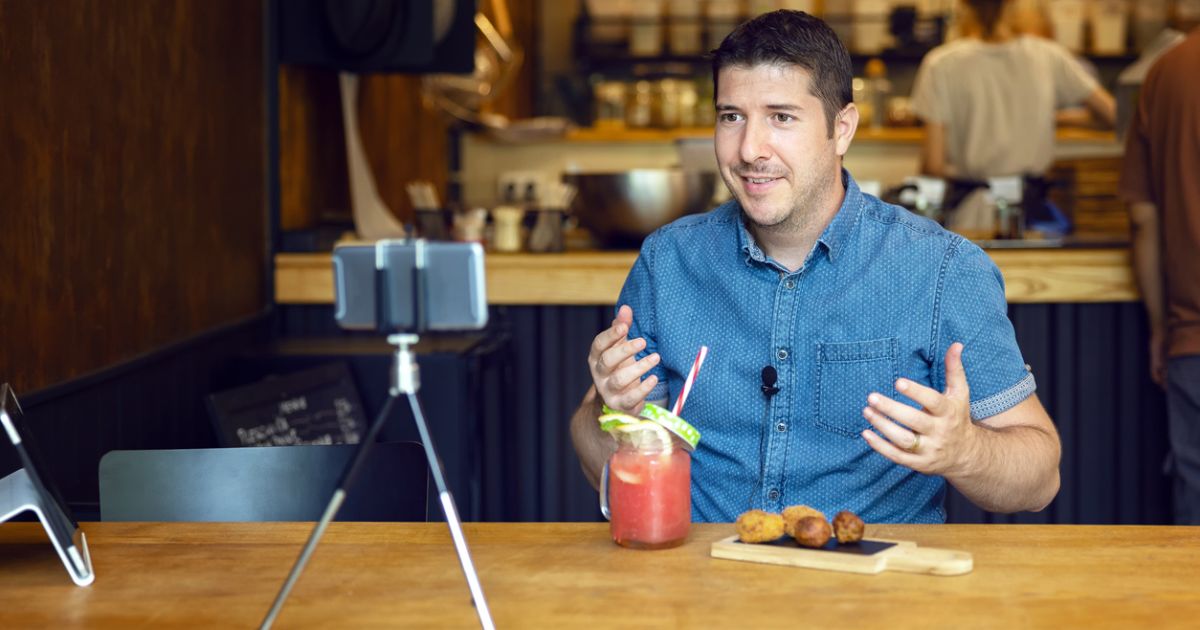The biggest influencers have broad, non-specific audiences. That's useful for them, but not always for a brand designing a marketing campaign for them. Brands using micro influencers can reach more deeply into very specific target markets. Micro influencer marketing in 2020 will continue to grow and build on a number of very recent successes.

What is a Micro Influencer?
A micro influencer is best understood as an influencer with an audience between 1,000 and 1,000,000 followers or audience members. They haven't broken big yet. They aren't celebrities who specialize in celebrity. Instead, they have a specialty or focus that draws a specific audience. They might be a food writer, a movie critic, a fashion expert, a designer, a life coach, or a streamer, just to name a few possibilities.
Why Use a Micro Influencer?
The advantage a micro influencer offers is that you have a very good idea who their audience is. They've already put the work into building an audience that's interested in a particular topic. If your brand and products aligns with that interest, you know you can create a highly effective campaign.
A macro influencer with a large audience will either charge a high price or take a large cut of the traffic they direct your way. The interest they draw may be more centered around their celebrity than their audience's natural interest in your brand. That means paying too much for an inefficient campaign.
>> Find out how much you should be paying for influencer marketing.
Higher Engagement
Micro influencers allow you to create inexpensive campaigns geared toward a target market that's much more likely to engage your brand and buy your product. Markerly studied Instagram engagement and found that those with fewer followers earned a much higher engagement rate:
Users with fewer than 1,000 followers saw likes 8% of the time. Users with under 10,000 followers earned likes at a 4% rate. Those with under 100,000 saw a 2.4% like rate. Those with more than a million only earned likes 1.7% of the time.
Brands Using Micro Influencers
As Lauren Moreno reports on the SMSsummit blog:
- Spotify: The music streaming giant paid micro influencers to feature their Discover Weekly feature. It allows you to discover new music on the platform based on the type of music you already listen to. Spotify paid their influencers 20 cents and engagement. Only 13 people initially joined the campaign. They produced 30,000 engagements.
- Sperry: The fashion company is well known for its attractive footwear. That kind of footwear generally isn't made for cold, wet conditions, though. When Sperry launched a line of fashionable shoes designed to be worn in the snow and rain, it partnered with micro influencers who had high engagement rates. They posted Outfit Of The Day photos featuring Sperry boots with the hashtag #OOTD. It didn't matter that these influencers had less reach. It mattered that they could create highly efficient engagement within the reach they do have.
- Adobe: The company launched a campaign centered around its Adobe Creative Cloud. They specifically wanted to advertise to UK university students. The “Made By You” campaign appealed to students to design material they could use in marketing the Adobe Creative Cloud. The initial campaign had a cost, but it created two things: it served as a way of creating free advertising material, and it encouraged students to use and purchase its products in order to create that material.
- GoPro: GoPro has famously partnered with micro influencer athletes. The wearable camera shows a point-of-view perspective of athletes skiing, skating, climbing, wingsuit gliding, running parkour – the list goes on. The nature of daring athletics means that videos from its partnered influencers are quick to get shared. Even partnerships with pets (and their owners) have been wildly successful. Loki the Wolfdog is one of the more recent successes that proves these partnerships can continue into other fields beyond athletics.
- Coca Cola: Miette Dierckx is an influencer who photographs and writes about her travel and the foods of different places. This paired perfectly with Coke's image of being enjoyed throughout the world and a drink to bring people together. This is a campaign that plays out over a long period of time, reinforcing a brand image to an audience rather than focusing on a concentrated product push.
- Glossier: The beauty products company is known for partnering with a wide range of ambassadors. They have more than 500 micro influencers partnered. They're willing to treat their entire audience as potential influencers. The strength here is that if they'd partnered with only a few big influencers, they'd only be featuring their products on a handful of looks. By partnering with hundreds of people, they're able to feature their products on hundreds of different skin tones ranging across an incredible scope of looks.
- Microsoft & National Geographic: The “Make What's Next” campaign focused on just 30 online pictures taken by photographers. The purpose of the images was to legitimize the role of women in business and STEM fields. The companies were transparent that this was both a social justice issue and a marketing campaign. The photos reached 91 million people across various sharing platforms.
- Audible: This is an audiobook company that partnered with photographer Jesse Driftwood. His specific appeal is that his posts feature strong images paired with an easygoing, conversational tone. His own brand image is reassuring and comforting. That pairs exquisitely with Audible's message that audiobooks are the perfect way to read and de-stress even as you're doing other everyday activities.
- Tom's of Maine: The brand focuses on natural health, but doesn't have a large marketing budget. Their fandom is regional and very deep, however. They decided to launch a campaign with their staunchest fans to help promote their products. They can't pay their partners, so they provide discounts and free products instead.
These are just a few brands using micro influencers. You can already see ways that brands small and large have effectively partnered with them. A macro influencer often has a non-specific audience and low engagement rates. They're expensive to work with. That budget can often be better spent on multiple micro influencers who appeal to your target market and have very high engagement rates.
Micro influencer marketing in 2020 can push you further than working with the largest influencers can. These influencers are accessible, and often very easy to work with. If one doesn't work out, you haven't just torpedoed an entire campaign the way you do if one macro influencer doesn't work. This approach allows you flexibility and greater focus on the audience you want to target most.
Need help with your influencer marketing strategy? Contact THAT Agency today at 561-832-6262, and don't forget to download your free copy of our 2020 Digital Marketing Trends Report:





